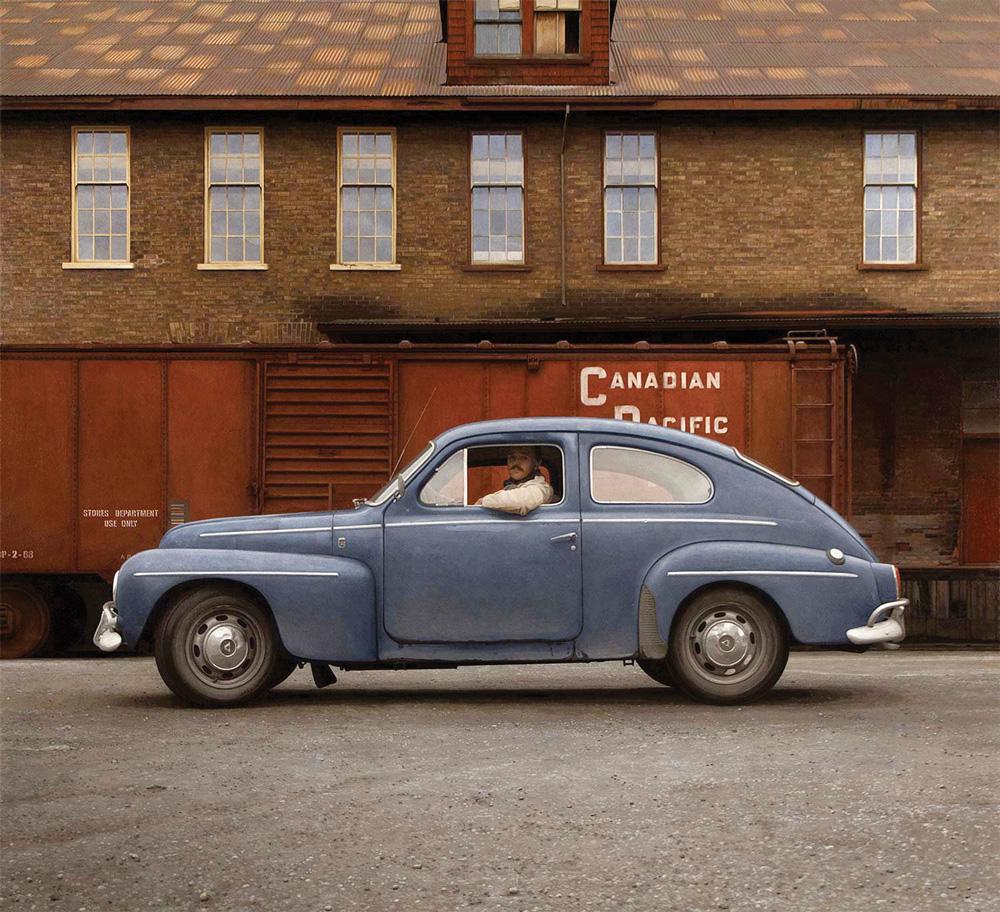Realism is a term that invites a storm of competing definitions and claims to truth. “Capture 2014: Nova Scotian Realism” was an ambitious exhibition showcasing work by 28 artists, organized by the Dalhousie Art Gallery in association with Professional Living Artists of Nova Scotia.
Curators Tom Smart and Peter Dykhuis argued that Realism cannot be defined as a single style or isolated aesthetic. Their selection reflected the many paths Realism can take. Magic realism’s emphasis on the beauty and strangeness of ordinary experience shares space with Social Realism’s emphasis on the importance of economic and social circumstances. Technology-influenced examples of Photorealism hung alongside moody landscapes with their transitory effects of light and weather, while still-life paintings addressed illusion and representation.
The exhibition began with paintings en plein-air by Joy Snihur Wyatt Laking and Tom Ward, artists who stress spontaneity of vision and attention to local detail. Tom Forrestall’s three studies of Halifax Harbour feature a historic, snow-covered fortress on Georges Island in the midst of a modern port’s busy shipping activity. Similarly to Forrestall, Richard Thomas Davis depicts past and present colliding, with a portrait of himself peering from the window of a 1965 Volvo.
Landscapes become more mysterious in the work of Peter Gough, Peter di Gesu and Jaye Ouellette, artists who stress light and atmospheric values. In the work of Anthony Clementi, Ambera Wellmann and others, Social Realism and Photorealism overlap as our exposure to world events filters through news media and the Internet. These Realists dig for ugly truths, using environmental disasters, cultural stereotypes and seamy politics to create metaphors of cover-up and dehumanization.
The still-life room featured images that ranged from Susan Paterson and Katie Melanson’s reverent odes to tromp l’oeil painting to Adam Gunn’s toyland menageries to Yanina Movchan’s dazzling fruit and flower piece. The attentive viewer of this Baroque work is rewarded by noting houseflies, hummingbirds, monkeys and snails among the monumental but fragile feast.
Realism often finds itself on the uncomfortable fringes of the art establishment, criticized for having too much content and not enough concept, too much tradition and not enough innovation. Nonetheless Realism is a kind of ugly duckling that refuses to go away, a slow painstaking craft in a lightning-fast world of ephemeral trends. “Capture 2014” celebrated Realism’s diversity of responses to place and community, while asking questions about the role of observation and convention in art.
This is an article from the Summer 2014 issue of Canadian Art. To read more from this issue, visit its table of contents. To read the entire issue, pick up a copy on newsstands or the App Store until September 14.

 Richard Thomas Davis, '65 Volvo, 2013. Oil over tempera emulsion on panel. 1.62 x 1.77 m.
Richard Thomas Davis, '65 Volvo, 2013. Oil over tempera emulsion on panel. 1.62 x 1.77 m.







